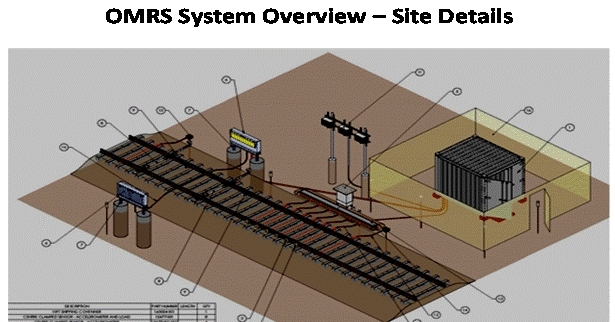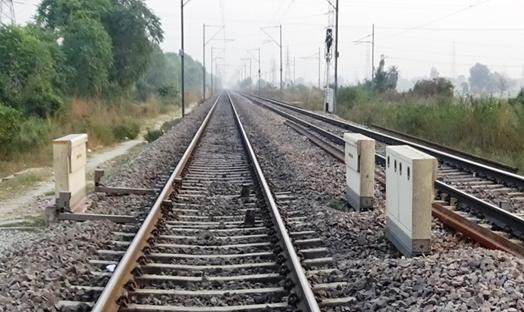Indian Railways adopts automated train defect detection
January 24, 2020: Indian Railways is installing On-line Monitoring of Rolling stock System (OMRS), a way-side automated inspection system that can detect the faults in the bearings and wheels of trains and catching them before it fails, thus resulting in efficient utilization of the coaches, wagons & locomotives.

January 24, 2020: Indian Railways is installing On-line Monitoring of Rolling stock System (OMRS), a way-side automated inspection system that can detect the faults in the bearings and wheels of trains and catching them before it fails, to help use the coaches, wagons & locomotives efficiently.
Thus the maintenance practices of Indian Railways will move from “Time Based Maintenance” to “Condition Based Predictive Maintenance”.
Challenges of manual inspection
The current practice of inspection of Rolling stock over Indian Railways is largely based on manual inspection, which is either trackside Rolling-in-Examination or pit examination of Rolling Stock in stationary or slow-moving condition. The visual inspections are done by trained manpower either in a pit or trackside location but this relies on the individual judgment.
System components
Acoustic Bearing Detector (ABD)/ Bearing Acoustic Monitor (RailBAM) gives an early warning on possible defects in the bearing box, before reaching the stage of hot box.
Wheel Impact Load Detector (WILD)/Wheel Condition Monitor (WCM) system measures the wheel impacts on tracks to identify the flat surface on wheels in Rolling Stock. This system is based on Accelerometer device to measure the wheel impacts.
PhotoTAG system is used for vehicle identification using Visual (photographic) identification technique.
OMRS online
Installation of 25 OMRS systems at 20 locations is in progress over entire Indian Railways’ network in phase-I.
1st OMRS system has been installed at Panipat in Ambala-Delhi section of Northern Railway in November 2017 and a Central Control Room termed as “National Command Centre (NCC)” for monitoring of all OMRS sites has been set-up at Delhi Kishanganj in March 2018.
6 OMRS systems have been installed and 10 systems are expected to be installed in the current financial year 2019-20.
OMRS site at Panipat

Defects detected by OMRS up to June 2019
• Faults in Bearings by RailBAM : Wagons- 33, Coaches – 6, Locomotives -1
• Faults in Wheels by WCM: Coaches – 7
“Encouraged by the results of the deployment of OMRS, including some critical detection which could have potentially been the cause of an accident, not otherwise detectable by normal maintenance procedure, Indian Railways is now going ahead with greater adoption of trackside based maintenance systems with an aim towards predictive maintenance,” said the release.
Smart Yards
Further, moving towards predictive maintenance practices in yards, Indian Railways is wants to convert its “freight examination yards” into technology-driven “Smart Yards” for automatic detection of faults/defects/deficiencies in freight wagons. These Smart Yards will predict anomalies like Hot Wheel Hot Axle, defective bearings, defective wheels, hanging/loose/missing parts etc. long before any failure actually happens. Smart Yards will be equipped with various automated technology-driven systems including OMRS, Hot Box Detector, Wheel Profile Recorder and Machine Vision Equipments etc.
The concept of smart yard is to use modern repair facilities, infrastructure, tools, automatic defect detection equipments and digital technology to enhance safety, reliability and productivity in freight trains operation.
The automatic defect detection equipments of Smart Yard shall provide advance data about hot axles and wheels, wheel flats, wheel profile & diameter, load imbalance, spring breakage, loose and hanging parts, wear condition of brake blocks etc. even before the rake arrives at the maintenance yard. It will then use this information for objective fault assessment and proactive staffing, thereby, reducing turn-around time while boosting safety and improving productivity.



